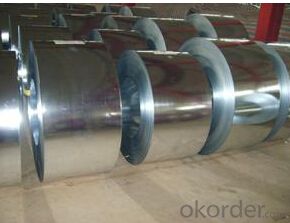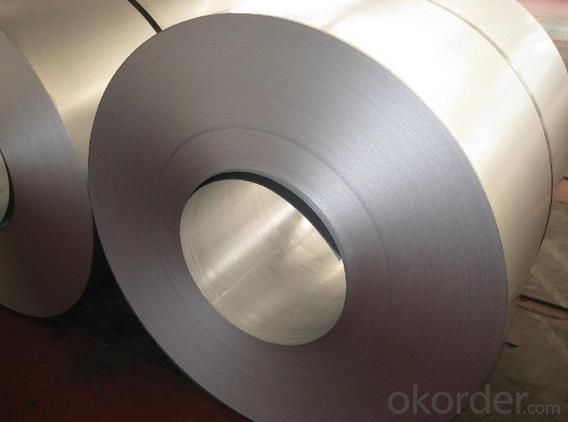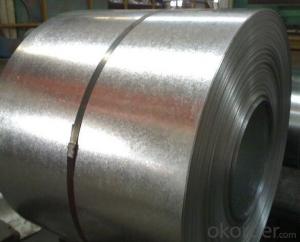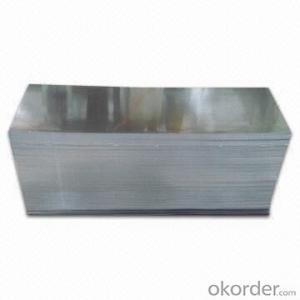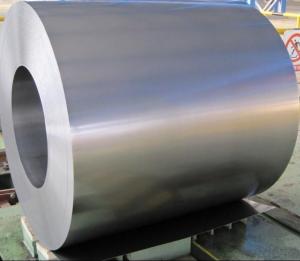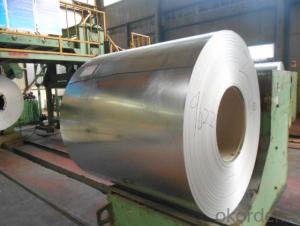High Tensile Regular Spangle Galvanized Steel
- Loading Port:
- Tianjin
- Payment Terms:
- TT OR LC
- Min Order Qty:
- 25 m.t.
- Supply Capability:
- 10000 m.t./month
OKorder Service Pledge
OKorder Financial Service
You Might Also Like
Basic Info.
Model NO.:SGCC, DX51D, ASTMA653
Surface Treatment:Galvanized
Technique:Cold Rolled
Standard:ASTM, JIS, GB, AISI, DIN, BS
Steel Grade:SGCC, Dx51d
Thickness:0.15-5.0mm
Width:914, 925, 1000, 1219, 1220, 1250, 1500
Zinc Coating:Z60-Z275, G30-G90
Surface:Regular Spangle, No-Spangle or Mini Spangle
Reference Standard:JIS G3302-1998, En10142-2000, GB/T2518-2004, ASTM
Export Markets:Global
Additional Info.
Trademark:YOGIC
Packing:Export Standard
Standard:SGCC, DX51D, ASTMA653
Origin:China
HS Code:7210490000
Production Capacity:20000mt Per Month
Product Description
Products Key words:
galvanized steel, galvanized steel coil, galvanized steel sheet, gi, gi coil, gi sheet, hdgi, hot dip galvanized steel coil, galvanized sheet, gi sheet price, zinc sheets, galvanized sheet metal prices, zincked sheet, galvanized strip, price of zinc sheets, zinc strip sheet, galvanized sheet metal fence panel,corrugated galvanized steel sheet,galvanized roofing sheet
Material brand:
SGCC,DX51D,ASTMA653,commercial quality,cs type A,locking forming type,S250,S280GD,S350GD,G550,SGC400,SGC440,S250GD,S350GD,G550,SGH340,SGH440.
HDGI Manufacture
THICKNESS 0.15-5.0MM,WIDTH,914,925,1000,1219,1220,1250,1500, Galvanized steel coil, HDGI
Thick: 0.15 to 5.0mm
Reference standard: JIS G3302-1998, EN10142-2000, GB/T2518-2004, ASTM A653M
Zinc coating:Z60-Z275,G30-G90,
Regular Spangle, No-spangle or Mini Spangle
Coil diameter: ID 508mm 610mm
HDGI MECHANICAL SPECS:
JIS G3302Yield Point Minimum N/mm2Tensile Strength MinimumElongation Minimum %Application
Classified symbolN/mm2Nominal Thickness mm (t)
cold-rolled base metalhot-rolled base metal 0.25≤0.4≤0.6≤1.0≤1.6≤t≥2.5
t<0.4< span="">t<0.6< span="">t<1.0< span="">t<1.6< span="">t<2.5< span="">
SGCCSGHC205270------------------Commercial
SGCH---------------------------Commercial Hard
SGCD1------270---34363738---Drawing
SGC340SGH340245340202020202020Structural
SGC400SGH400295400181818181818Structural
SGC440SGH440335440181818181818Structural
SGC490SGH490365490161616161616Structural
---SGH540400540161616Structural
SGC570560570------------------Structural
Equal coating thickness:
Coating Weight Marking Code (Zinc)Z06Z08Z10Z12Z18Z20Z22Z25Z275
Coating Thickness0.0130.0170.0210.0260.0340.0400.0430.0490.054
Packaging Details:
Packing: Standard export packing, 4 eye bands and 4 circumferential bands in steel, galvanized metal fluted rings on inner and outer edges, galvanized metal and waterproof paper wall protection disk, galvanized metal and waterproof paper around circumference and bore protection
Scope of Application:
Usage: construction,the manufacturing of cars, ships, containers and household electric appliances,other industries usage.
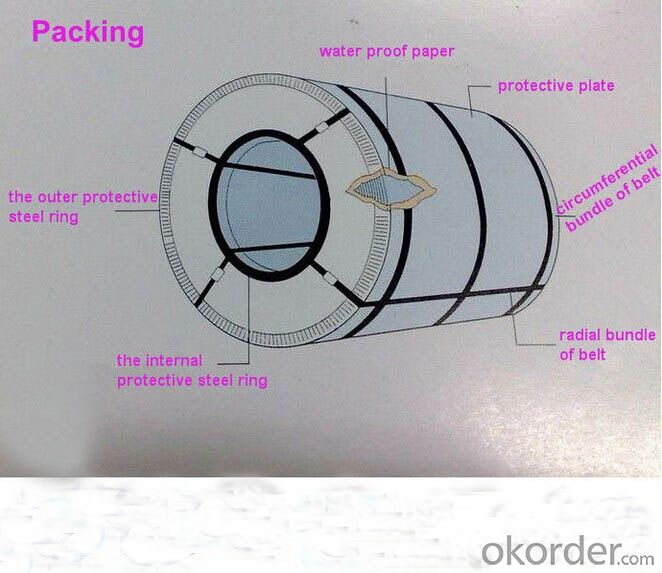
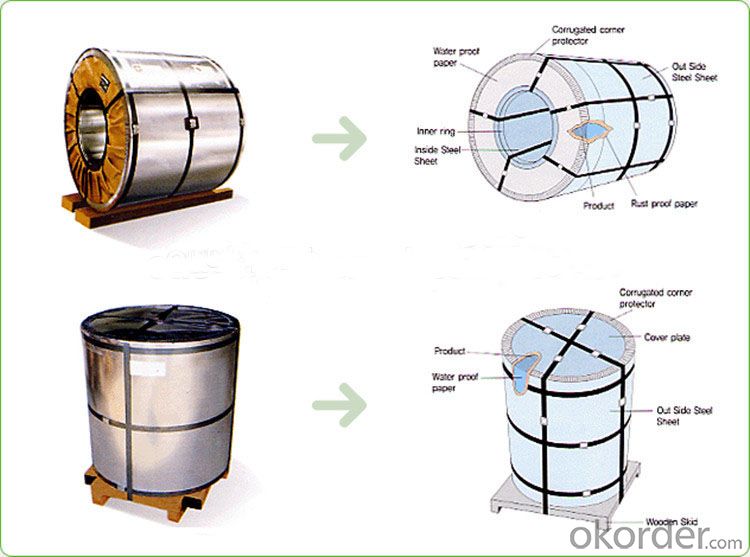
FAQ
1.What's your MOQ?
25MT, it is for one container.
2.Do you have QC teams?
Yeah, sure, our QC team is very important, they will keep the quality control for our products.
3. What's your normal delivery time?
Our delivery time about 10-20days for standard sizes, if you have other requirements like hardness and width ,it is about 20-40days. But don't worry ,we also try our best for the delivery time ,because time longer and our cost is higher.
4.Are the products tested before shipping?
Yes, all of our PPGI and GI was qualified before shipping. We test every batch every day.
- Q: How are steel coils used in the production of industrial storage tanks?
- Industrial storage tanks commonly utilize steel coils due to their superior strength and durability. These coils are typically crafted from high-quality steel that is rolled into a coil shape, enabling convenient transportation and handling. During the production process, steel coils are initially uncoiled and flattened to create steel sheets. These sheets are then cut and formed into the desired shape and size for the storage tank. The steel sheets are joined together through welding or bolting to construct the tank's body, which is designed to endure high pressure and heavy loads. The utilization of steel coils in the production of industrial storage tanks offers numerous benefits. Firstly, the strength and durability of steel ensure that the tanks can withstand harsh conditions and resist corrosion. This is particularly vital for storage tanks containing corrosive substances or exposed to severe environments. Moreover, the flexibility of steel coils permits customization of the tank's design and size. This is especially advantageous in industries with varying storage requirements, like the oil and gas sector. Steel coils can be effortlessly cut and molded into diverse shapes and sizes, facilitating the creation of storage tanks tailored to specific storage needs. Furthermore, steel coils are easily transportable and storable, making them a cost-effective choice for industrial storage tank production. The coils can be efficiently transported to the manufacturing facility, reducing transportation costs and logistical complexities. In conclusion, steel coils play a crucial role in the production of industrial storage tanks by providing strength, durability, and customization options. Their usage guarantees the safe storage and protection of various substances, rendering them indispensable in a wide range of industries.
- Q: Is steel case ammo going to mess the gun up or is it just going to wear the parts out faster and if so how much faster? (I am not planning on reloading the rounds)
- The ak was designed with the steel cased ammo in mind. The only real wear is going to be the chamber area, and even at that, it is going to take many thousands of rounds to wear it out. be more concerned with the corroive ammo, and clean the firearm well with warm soapy water or military bore cleaner after each shooting session.
- Q: What are the different methods of corrosion protection for steel coils?
- Steel coils can be protected from corrosion using several different methods, each with its own advantages and disadvantages. One commonly used method is to apply a protective coating to the steel coils. This can be done through various techniques like hot-dip galvanizing, electroplating, or painting. Coatings act as a barrier between the steel surface and the corrosive environment, preventing direct contact and reducing the risk of corrosion. Another option is the use of VCI materials, which release chemicals that inhibit corrosion when they come into contact with the steel surface. These materials can be applied as coatings, films, or papers, and are particularly useful for long-term storage or shipping of steel coils. Cathodic protection is a method that involves the use of sacrificial anodes or impressed currents. Sacrificial anodes, made of zinc or aluminum, are connected to the steel surface and corrode instead of the steel, sacrificing themselves to protect the coils. Impressed current systems use a direct electrical current to prevent corrosion on the steel surface. Proper wrapping and packaging can also provide corrosion protection for steel coils. This includes using moisture barrier films, desiccants, or absorbent materials to reduce moisture content. Adequate ventilation and avoiding contact with other corrosive substances are also important. Controlling the environment in which the steel coils are stored or used is crucial for corrosion protection. This involves maintaining proper humidity levels, controlling temperature, and managing air quality. By minimizing exposure to corrosive elements like moisture, salts, or chemicals, the risk of corrosion can be significantly reduced. It's worth noting that the choice of corrosion protection method depends on factors such as the specific application, budget constraints, and desired lifespan of the steel coils. A combination of these methods may also be used to enhance corrosion protection.
- Q: How are steel coils processed for further use?
- Steel coils are processed for further use through a series of steps including uncoiling, leveling, cutting, and shaping. The coils are first uncoiled to separate them into individual sheets. Then, the sheets undergo leveling to remove any imperfections and ensure a flat surface. After that, the sheets are cut into desired lengths or shapes using precision cutting tools. Finally, the cut sheets are shaped according to the specific requirements of their intended application, such as bending, rolling, or stamping.
- Q: What are the different methods of coil recoiling for steel coils?
- There are several different methods of coil recoiling for steel coils, each with its own advantages and applications. Some of the common methods include: 1. Slitting and rewinding: This method involves cutting the wide steel coil into narrower strips, which are then rewound into smaller coils. Slitting machines with circular blades are typically used to cut the steel, and the rewinding process ensures tight and uniform winding of the narrower strips. This method is widely used in industries such as automotive, construction, and packaging. 2. Rewinding with tension control: In this method, the steel coil is unwound and rewound with the help of tension control systems. These systems maintain even tension throughout the recoiling process, ensuring consistent winding quality. This method is particularly useful when dealing with delicate or sensitive materials that require gentle handling. 3. Recoiling with edge trimming: Sometimes, the edges of steel coils may be damaged, uneven, or contain defects. In such cases, edge trimming can be employed along with the recoiling process. Edge trimming machines remove the defective sections, resulting in coils with smooth and consistent edges. 4. Recoiling with surface treatment: Surface treatment methods like oiling, coating, or galvanizing are often applied to steel coils to enhance their corrosion resistance or improve their surface properties. Recoiling can be done in conjunction with these treatments, ensuring proper application and uniform coverage on the entire coil surface. 5. Recoiling with tension leveling: Tension leveling is a process that helps eliminate coil shape defects, such as coil set or crossbow, by applying tension during recoiling. This method ensures that the final coil has a flat and even shape, which is beneficial for subsequent processing and manufacturing operations. 6. Recoiling with precision slitting: Precision slitting is a specialized method used to achieve extremely narrow strip widths or tight tolerances in the steel coil. It involves precise control of the slitting knives and the winding tension to ensure accurate and consistent strip dimensions. This method is commonly used in industries that require high precision, such as electronics or precision engineering. Overall, the choice of coil recoiling method depends on various factors including the desired coil dimensions, material characteristics, surface requirements, and the specific application or industry involved. Manufacturers often utilize a combination of these methods to meet the diverse needs of their customers.
- Q: What are the common methods of painting or coating steel coils?
- Coil coating is a commonly used technique for painting or coating steel coils. It involves cleaning and pre-treating the coils to remove contaminants and enhance adhesion. Next, a primer or base coat is applied to establish a solid foundation. This primer safeguards the steel against corrosion and enhances the overall durability of the coating. Once the primer is applied, the steel coils undergo a series of rollers to apply the topcoat. The topcoat can consist of various materials such as polyester, polyurethane, or fluoropolymer, depending on the desired properties of the final coating. These topcoats provide the desired color, gloss, and protection against weathering, chemical exposure, and UV radiation. Electrostatic spraying is another popular method for painting or coating steel coils. It involves atomizing the paint or coating material into fine droplets and charging them with electricity. The grounded steel coils attract these charged droplets, resulting in a controlled and even application of the paint or coating material. Powder coating is yet another technique utilized for painting or coating steel coils. It involves electrostatically charging a dry powder and spraying it onto the steel coils. The charged powder adheres to the steel surface due to electrostatic attraction. The coated steel coils are then heated, causing the powder to melt and form a continuous film, resulting in a durable and resistant coating. In conclusion, these methods provide a wide range of options in terms of color, finish, and performance characteristics for painting or coating steel coils. The choice of method depends on factors such as desired appearance, level of protection required, and specific application requirements.
- Q: is red steel any good??????? not sure im really impressed but im not really into fighting games but it looks cool.... so whats your views guys???????anyone bored of smooth moves yet?anyone think the new sonic is bit cra ppy !!!!!!!!!!! darn them any new goooood games coming oput on the wii??
- Trauma center is awesome. Red steel isn't bad. Same as any other FPS except with a pointer... It's no half life, but its not terrible. Multiplayer is highly entertaining though. Especially if you can get four people playing mystery mode. Trust me, its worth the effort of getting them together. Like the other guy said, rent it. I wouldn't buy it.
- Q: I wasn't expecting much because i knew it was cheap (Trying to avoid high prices) But anyway i cut a few bottles and cans and i noticed the very edge of the blade was starting to bend. I ignored it and tried it on a 3 inch limb, and the whole blade bent sideways where the limb hit it.I heard cold steel was supposed to be top quality and I wanted to know how durable their swords are and if they're worth it. Thanks!
- Yes. Cold Steel is a great company with a quality product, and I've always been happy with their work. Their katanas, while not made in the traditional method, are heavy duty carbon steel and should handle abuse well. I'd recommend them based on my experience with other Cold Steel products.
- Q: What are the current trends in the steel coil industry?
- Some current trends in the steel coil industry include the increasing demand for high-strength steel coils due to their durability and lightweight properties. There is also a growing focus on sustainability and environmentally friendly practices, leading to the development of eco-friendly coatings and recycling initiatives. Additionally, digitalization and automation are becoming more prevalent, enhancing efficiency and productivity in steel coil manufacturing processes.
- Q: is there a type of steel that is stronger or does the rail represent the top of the line?
- consumer-friendly steel is used however the rails are tempered to cause them to stand up to the pounding they get from the practice wheels,the intense velocity trains utilized in Europe are made up of a greater variety of steel in accordance to organization who makes them in Germany ,i think of it replaced into Krupp's of Germany who cause them to
Send your message to us
High Tensile Regular Spangle Galvanized Steel
- Loading Port:
- Tianjin
- Payment Terms:
- TT OR LC
- Min Order Qty:
- 25 m.t.
- Supply Capability:
- 10000 m.t./month
OKorder Service Pledge
OKorder Financial Service
Similar products
Hot products
Hot Searches
Related keywords


